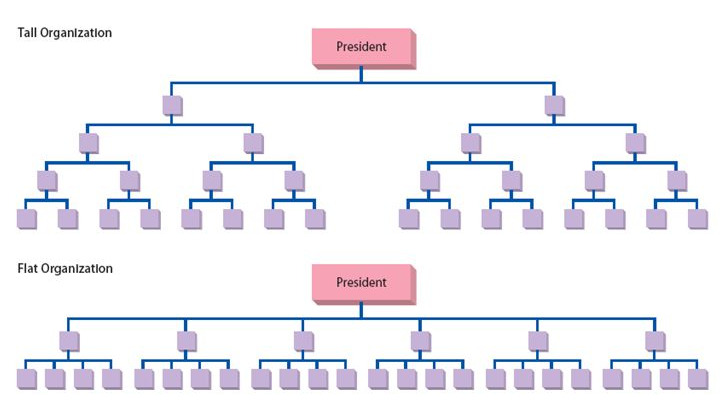Personal power is power that resides with an individual, regardless of his or her position in the organization. Someone usually exercise personal power through rational persuasion or by playing of followers identifications with him or her. An individual with personal power often can inspire greater loyalty and dedication in followers than someone who has only position power. The stronger influence from the fact that the followers are acting more from choice than from necessity and thus will respond more readily to request and appeals. Of course the influence of a leader who relies only on personal power is limited, because followers may freely decided not to accept his or her directives or orders. The distinctions between formal and informal leadersContinue reading
Principles of Management
Organizational Design and Structure – Meaning and Importance
Organizational Design and Structure Organizational design is defined as a process of reshaping organization structure and roles, or it can be more effectively defined as the alignment of the structure, process, rewards and talent with the strategy of the business. Amy Kates and Jay Galbraith have found (building on years of work by Galbraith) that attention to all of these organizational elements is necessary to create new capabilities to compete in the given market. This systemic view is referred to as the “star model” approach and is more likely to lead to better performance . Organization design may involve strategic decisions, but is properly viewed as the path to execute strategies effectively . Many companies fall into the trap ofContinue reading
Types of Business Ownership – Sole Proprietorship and Partnership
When entrepreneurs establish a business, they must decide on the form of business ownership. There are three basic forms of business ownership: sole proprietorship, partnership, and corporation. The form that is chosen can affect the profitability, risk, and value of the firm. The business ownership decision determines how the earnings of a business are distributed among the owners of the business, the degree of liability of each owner, the degree of control that each owner has in running the business, the potential return of the business, and the risk of the business. These types of decisions are necessary for all business. Sole Proprietorship A business owned by a single owner is referred to as a sole proprietorship. The owner ofContinue reading
Criticism of Scientific Management Theory (Taylorism)
Frederick Winslow Taylor was one of the first theorists to consider management and process improvement as a scientific problem and, as such, is widely considered the father of scientific management. He proposed that a business’s economic efficiency could be improved by simplifying and optimizing work processes, which would, in turn, increase productivity. Taylorism, as a philosophy, was the product of a series of experiments and observations, such as time-motion studies, designed to determine the most effective and efficient way to complete a task. Its fundamental and inter-related principles can be summarized as follows: Using scientific method to challenge habitual working practices and to determine the most efficient way to perform specific work tasks; Matching workers’ capability and motivation to theContinue reading
Six Elements of Organizational Design
Organizational design is a process of developing and changing the organization’s structure by its managers. It is a chart containing the reporting structure i.e. who reports to whom. Organizational structure is thus a framework on which an organization is patterned for coordinating and carrying out organizational tasks. Organizational design involves decisions about the following six elements: 1. Work Specialization: Work specialization describes to which the overall task of the organization is broken down and divided into smaller component parts. For example, one person would paint a wall and another person fixes a door. So by breaking jobs up into small tasks, it could be performed over and over every 10 seconds while using employees who had relatively limited skills. TheContinue reading
Difference Between Tall and Flat Organizational Structure
The concept of organization is born when two or more people work together in order to achieve a common goal. Purpose of an organisation is to create responsibilities and positions by which an organisation can carry out the work. Organisation may be formed in different sizes. All people working in the same organisation have their own functions, attitudes and techniques to apply for achieving their common goal. In order to manage and control the resources, an organisation needs to be structured. Organization structure is formal system that makes the organisation to run smoothly and helps to focus the common goals and objectives. It gives a clear idea about the chain of command that need to be prioritized when a problemContinue reading
